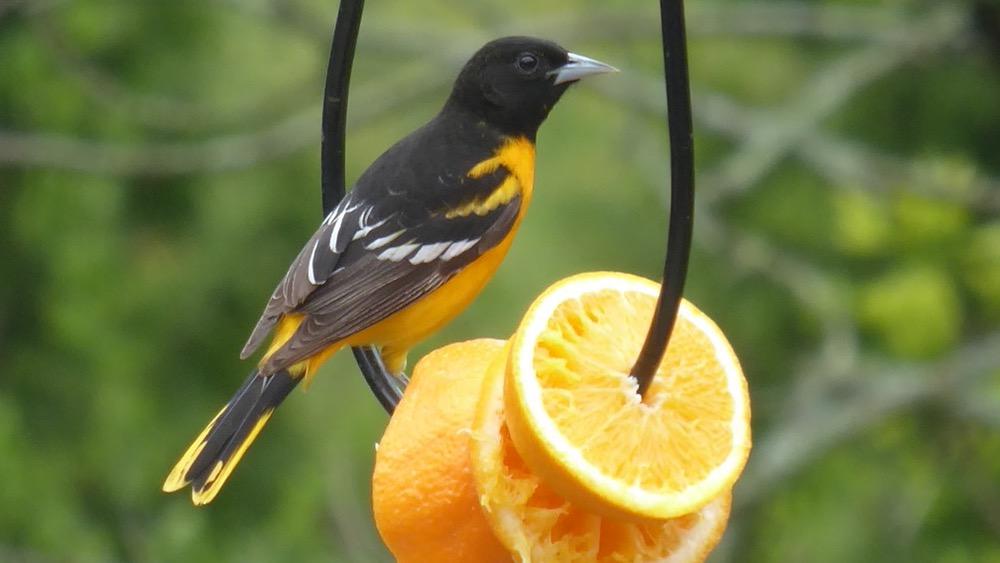I’m chomping at the bit. It’s mid-spring and I’m in anticipation of a visitor from the south, the Baltimore oriole. Given what we’ve been through with pandemic restrictions, it’s nice to welcome a visitor, even if it is a bird. What a powerful GPS system they have — and with their lifespan of about 12 years, I often wonder if it’s the same birds that arrive each year on my property or their relatives.
The Baltimore oriole (Icterus galbula) gets its name from Lord Baltimore’s coat of arms, which sports the colours of yellow and black (the female tends to be yellow and brown and the male is bright orange and black). Oddly, it isn’t really an oriole — it’s a blackbird. Orioles are native to Europe, and the North American birds were named as such because of their resemblance to these overseas cousins.
I keep an outdoor journal, which has periodical entries on birds, bees, gardening, chickens, weather and happenings around the property (a journal is of value to all rural dwellers), and according to my records, the oriole has always returned here from its winter abode between May 8 and 12.

Fast Facts about Baltimore Orioles
• Like many songbirds, orioles migrate at night.
• When they are not eating oranges, orioles thrive on insects. A favourite is the tent caterpillar.
• Orioles don’t eat birdseed.
• Orioles cohabit with hummingbirds but have been known to dominate them at the hummingbird feeder.
• The birds’ feathered enemies are rapacious grackles, jays and crows.
• Their sack-like nest (built by the female) is usually in a willow, elm or maple, but not out of reach of pesky varmints like squirrels and raccoons.
• Oriole eggs are pale grey and bluish-white.
As the orioles close in on their northern breeding grounds, they are slightly famished from the long haul. Like many bird lovers, we put out orange slices for them and normally attract three to five who will call our place home for 2 to 3 weeks before they go farther into the woods to nest and breed. My journal reminds me that last year our visitors were a combination of two males, a juvenile and a female.
When the birds arrive, they will consume two oranges a day, piercing the orange with their beak and drinking with their tongue.
The oranges are out and we can’t wait.













